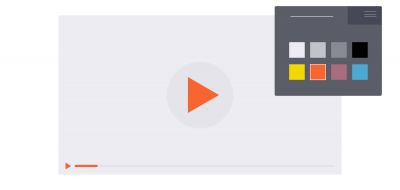Low video ad fill rate is an issue that continues to challenge publishers’ efforts to maximize revenue for their video content. There are a wide variety of reasons for sub-optimal fill rate, such as latency, lack of demand, bandwidth limitations, reliance on VPAID, platform restrictions, and creative errors.
In a recent webinar, I provided tips and best practices for increasing fill rates based on my experience working directly with our publisher customers to remedy their ad problems.
EXPERIMENT WITH THE TIMEOUT SETTING
The most common ad errors are caused by timeouts – these happen when the ad processes do not execute in the time provided by the IMA plugin and are therefore interrupted with an error. Changing your timeout setting can be a fairly simple fix that can deliver strong results. Play around to find a timeout value that works best for your site. I’ve found that usually around 7-8 seconds, depending on the complexity of the setup, is a good starting point to reducing common timeout errors.
Keep in mind, other elements on the page increase the time the browser takes to start and complete the process. So the more rich media on the page, the longer it will take. Additionally, complex ad logic requires a higher timeout but user experience demands a shorter one. This may present a dilemma to publishers, but it is important to keep in mind that user experience still suffers when ads fail due to short timeouts.
VPAID
VPAID scripts can be a major contributor to latency, especially on mobile. Figuring out the right settings can only improve your fill rate.
VPAID mode, a setting that can be found in the IMA plugin, presents three options to choose from: “Disabled”, “Enabled” and “Insecure”. The default setting is “Enabled”; however, this setting may not work for all types of programmatic VPAID. It allows VPAID ads to be viewed in safe frame, which means VPAID can’t execute the scripts outside of the frame where it is being rendered.
While we don’t advise defaulting to “Insecure” mode, it can be beneficial if you run a lot of VPAID ads. ‘Insecure’ mode will render VPAID in a “friendly” iFrame, allowing it to interact with the player and page. Some VPAID scripts require this level of access and will fail and/or cause errors without it.
MINIMIZE LATENCY
Many sites struggle with latency to some extent, and it is one of the primary causes of poor fill rates. Latency is caused by too many concurrent processes and scripts running in the browser at the same time and is most acute on mobile web and in-app. Every part of the ecosystem contributes to latency but some of the biggest offenders are redirects, elements that obstruct the critical rendering path, and overabundance of third-party VPAID scripts. To solve for this, the best things to do are to eliminate unnecessary plugins, remove redundant scripts, and simplify your programmatic setup.
MANAGE AD BLOCKERS AND AD FILTERS
Did you know that ad blocking can account for 10-30% of missing impressions? By managing ad-blockers and filters you can help to recover those impressions. There are tools that can measure their effects on your inventory. We also strongly advocate using server-side ad-insertion (SSAI), to bypass blockers by seamlessly stitching the ad into the video content so the file is delivered as one, so blockers cannot detect the ads. Brightcove can help you with both of these approaches – speak to your Account Manager for more information.
SET UP DFP FALLBACKS AND PASSBACKS
Doubleclick for Publishers is the most commonly used ad server for Brightcove customers. DFP provides two additional mechanisms for improving fill rate and making sure less valuable impressions are wasted: passbacks and fallbacks.
Passback serves GPT that delivers a house ad or other remnant ad when 3rd party doesn’t meet the requirement of the publisher. This can make up for a wide variety of 3rd party ad errors. Fallbacks increase the likelihood of filling an impression when using VAST redirects. DFP returns a slew of ads, which allows it to “fall back” in case of a failed initial attempt.




